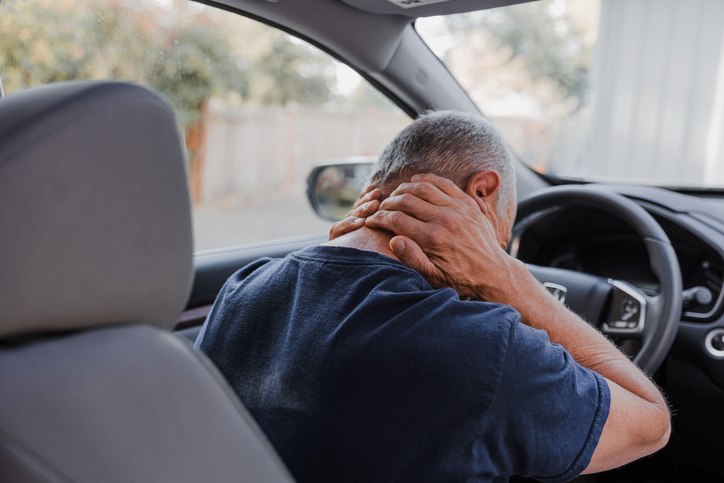The Hidden Hazards of Rural Roads: Why Small-Town Drivers Face Higher Crash Risks
Ryleigh Dirks October 8, 2025 0 COMMENTS
When people imagine dangerous driving conditions, they often picture congested city streets or high-speed urban interstates. But statistically, rural roads are far deadlier. For drivers in and around Gainesville, Georgia, understanding these unique hazards could be the key to staying safe—and knowing what to do if a crash occurs.
1. Rural Roads See a Disproportionate Rate of Fatal Crashes
According to the National Highway Traffic Safety Administration (NHTSA), roughly 40% of fatal crashes in the U.S. occur on rural roadways, even though far fewer vehicles travel them. In Georgia specifically, state data show that rural drivers are 1.5 times more likely to die in a car crash than urban motorists, based on Georgia’s Highway Safety Plan.
Why are these numbers so skewed? A few major factors stand out:
-
Higher travel speeds: Many rural roads are posted at 55 mph or higher, with little margin for error.
-
Less forgiving surroundings: Ditches, trees, and embankments leave no room for recovery if a driver veers off.
-
Delayed emergency response: In remote areas, it often takes longer for help to arrive, which worsens survivability.
2. Roadway Departure and Rollover Crashes Dominate
The Governor’s Office of Highway Safety in Georgia reports that roadway departures and rollovers are the most common fatal crash types in rural counties. In fact, 72% of rural roadway departure crashes involve only one vehicle, and 73% of rural rollover fatalities occur without another car involved.
These statistics highlight a key reality: on rural roads, a driver’s greatest threat may not be another vehicle—but a loss of control on a curve or shoulder.
3. Common Risk Amplifiers on Rural Roads
| Hazard | Why It Matters | How to Reduce Risk |
|---|---|---|
| Poor or inconsistent lighting | Makes obstacles harder to see | Use high beams when safe and reduce speed after dark |
| Narrow or no shoulders | Leaves no space for correction | Maintain lateral clearance from the road’s edge |
| Blind curves and hills | Hide oncoming vehicles | Slow before crests and turns |
| Lack of guardrails | Increases rollover severity | Scan the road ahead and adjust speed |
| Faded or missing lane markings | Reduces lane discipline | Stay centered and alert |
| Wildlife and debris | Common in wooded or rural corridors | Avoid swerving; brake firmly if safe |
4. Defensive Driving Strategies for Rural Roads
Drivers in North Georgia can protect themselves by practicing defensive driving habits tailored to rural terrain:
-
Reduce speed before curves and hills—don’t rely on momentum.
-
Keep a three-second following distance or more at all times.
-
Use high beams on dark stretches when there’s no oncoming traffic.
-
Avoid distractions, especially phones and touchscreen systems.
-
Take regular breaks on long drives to prevent fatigue.
The AAA Foundation for Traffic Safety notes that driver inattention contributes to over 25% of all serious crashes—an even greater risk on roads with poor lighting or narrow lanes.
5. What to Do After a Rural Road Crash
Even the most cautious drivers can find themselves in an accident. The Centers for Disease Control and Prevention (CDC) advises motorists to stay calm, move to safety if possible, and call 911 immediately. After ensuring everyone’s safety:
-
Document the scene with photos.
-
Exchange contact and insurance information.
-
Obtain a police report from responding officers.
-
Seek medical evaluation—even for minor pain.
-
Report the incident to your insurer promptly.
Because liability can be complex on poorly maintained or unlit rural roads, consulting a local attorney early can make a significant difference in how your claim is handled.
6. Why Gainesville Drivers Should Pay Attention
Gainesville sits on the edge of Georgia’s foothills, where rural road design meets suburban traffic. Drivers frequently move between divided highways and two-lane backroads, creating unpredictable driving conditions. As infrastructure projects expand through Hall County, local awareness and driver education are critical to reducing fatalities.
When accidents do occur, determining who’s responsible—whether it’s a negligent driver, a poorly marked work zone, or an unsafe roadway—requires both investigative and legal expertise. That’s why it’s important to contact an experienced Gainesville, Georgia car accident attorney to help navigate insurance disputes, reconstruct accident causes, and secure fair compensation for victims.
RELATED ARTICLES
Recent Posts
- Why Thanksgiving Is the #1 Day for Home Cooking Fires — And How to Prevent Them
- The Hidden Shoulder Hazards in Construction Work — and How Workers Can Stay Safe
- The Hidden Safety Risks on Today’s Construction Sites — And Why Better Site Data Matters More Than Ever
- What the New Social Security Disability Changes Could Mean for Workers
- Home Safety Checklist 2026: Preventing Accidents, Fires, and Break-Ins in Comal County

